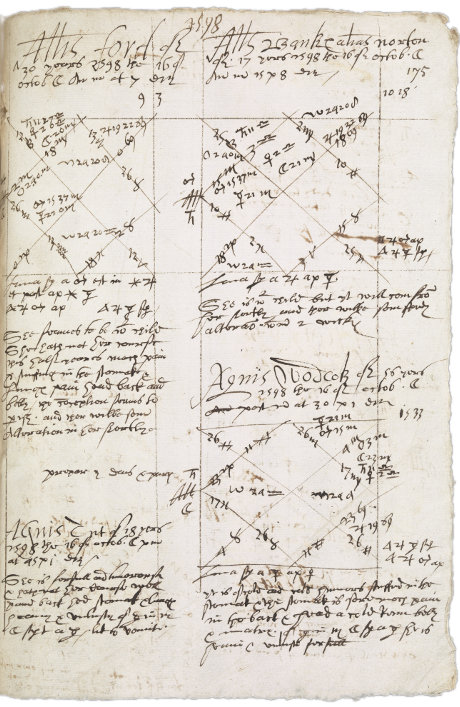
A page from Simon Forman’s casebook for 16 October 1598. MS Ashmole 195, f. 175r. Copyright Bodleian Library, University of Oxford, 2018.
Simon Forman, Richard Napier, and their associates practised astrology with pen in hand. They recorded the name and age of each patient, the question asked, and the moment when the consultation began. Based on this, they constructed an astrological chart, plotting the positions of the five known planets and the sun and moon within the twelve celestial houses. Then the astrologers judged the influences of the celestial bodies on the lives of men and women.
Forman recorded over 10,000 consultations between 1596 and 1603. His practice had begun at least a decade earlier and continued until his death in 1611. The surviving records are incomplete: Forman’s records from before 1596 and after 1603 are lost. In the late 1590s, Forman taught Napier his methods. Napier’s records survive in full, from 1597 to his death in 1634, apart from a lacuna from autumn 1613 to spring 1614 that is probably the result of a volume having gone missing. Napier’s practice was continued by his nephew, Sir Richard Napier, some of whose cases survive through the early 1660s. The extant volumes document roughly 80,000 consultations.
Forman’s and Napier’s casebooks constitute what is probably the richest surviving set of medical records from the period before 1700. At least 90% of the questions related to matters of health and disease. The remainder included questions about marriage, career prospects, missing persons, stolen property, travel plans, legal suits and witchcraft.
These records are a unique source for the study of everyday life and the practice of medicine in early modern England. Some clients consulted the astrologers regularly, others only once. More than 60,000 people are represented in these records. They range from servants to noblemen, children to the elderly. Forman’s clients were concentrated in London, where he lived. Most of Napier’s clients were from Buckinghamshire, where he was rector of Great Linford, or from the neighbouring counties of Bedfordshire and Northamptonshire. The astrologers’ lives are documented in detail in these pages.
Forman’s and Napier’s casebooks are held in the Bodleian Library, Oxford. They fill 66 calf-bound volumes, page after page written in antiquated and messy handwriting. Scholarship on the casebooks has informed historical work since the 1970s, but this is the first time that they have been edited.


